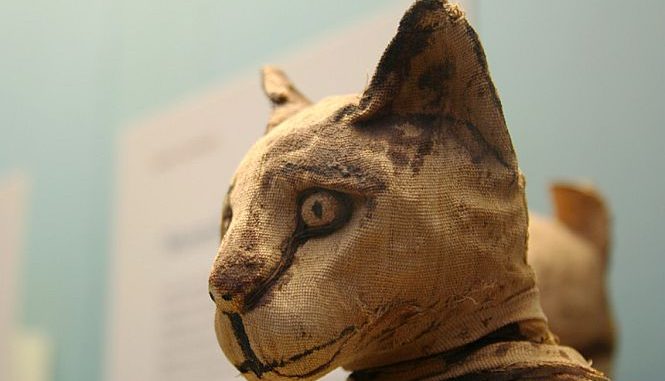
A scandal at the heart of ancient Egypt’s animal mummy industry has been exposed by scientists on the BBC’s Horizon programme.
Scientists at Manchester Museum, in collaboration with the University of Manchester, studied mummified objects and found some to be lacking in content. Using scanners to look inside the wrapped mummified cloth bundles, they found on average, most to be empty of the animal content they were representing. The largest scanning project of its kind revealed a third of the bundles of cloths examined, to be empty inside.

BYPASS THE CENSORS
Sign up to get unfiltered news delivered straight to your inbox.
You can unsubscribe any time. By subscribing you agree to our Terms of Use
Latest Video
It shows that the ancients were also scoundrels when it came to selling dodgy goods, without any consumer legislation protection. The researchers found the mummified bundles instead contained general fillings found laying around ancient workshops, as the crafty embalmers were probably running out of supplies.
Focus Fen reports:
The research team has been conducting the largest scanning project of its kind. More than 800 mummies, ranging from cats and birds to crocodiles, have so far been analysed using X-rays and CT scans.
About a third of those scanned contain complete animals, which have been remarkably well preserved.
Another third contain partial remains – but the rest have been empty.
Dr Lidija McKnight, an Egyptologist from the University of Manchester, said: “There have been some surprises. “We always knew that not all animal mummies contained what we expected them to contain, but we found around a third don’t contain any animal material at all – so no skeletal remains.”
Instead, she explained, the linen was padded out with other items. “Basically, organic material such as mud, sticks and reeds, that would have been lying around the embalmers workshops, and also things like eggshells and feathers, which were associated with the animals, but aren’t the animals themselves.”
Unlike human mummies, which were created to preserve the body for the afterlife, animal mummies were a religious offering.
“We know the Egyptians worshipped gods in animal forms, and an animal mummy allowed you some connection with the world of the gods, ” explained Dr Campbell Price, curator of Egypt and Sudan, at Manchester Museum, which will have an exhibition on animal mummies in October.
“Animal mummies were votive gifts. Today you’d have a candle in a cathedral; in Egyptian times you would have an animal mummy.
“You would go to a special site, buy an animal mummy, using a system of barter. You’d then give it to a priest, who would collect a group of animal mummies and bury them.”
Excavations have revealed that demand for these sacred gifts was high.About 30 vast catacombs have been discovered in Egypt, packed from floor to ceiling with millions of mummies. Each tomb is dedicated to a single creature, such as dogs, cats, crocodiles, ibis and monkeys.
Scientists estimate that up 70 million animals may have been mummified by the Egyptians. “The scale of animal mummification between about 800 BC and into the Roman period was huge,” said Dr Price.
“In terms of how many animals were reared and killed, it would have been on an industrial scale. The animals were young and killed when they were quite small. To achieve those numbers you had to have a very specific breeding programme.”
The researchers believe that despite the fact that animals were mass-bred, the mummy makers probably struggled to keep up with the demand.
However, they do not think that the partial or empty mummies were a scam, and the pilgrims may have known they were not burying a complete creature.


